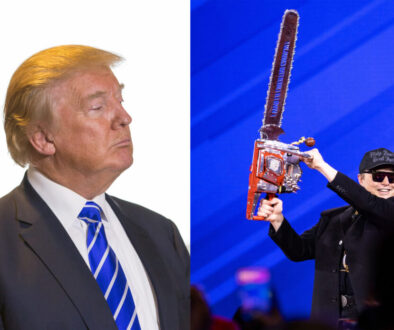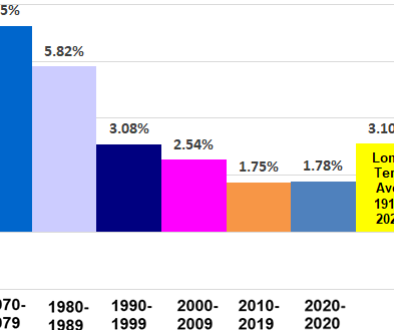Hornswoggled – How the Top One Percent Fooled the People into Thinking They are the Job Creators

Who are the Real Job Creators?
Are the real job creators the top 1 Percent or the 99 percent? Turn on CNBC—the NBC business channel. You can be pretty sure that just about everyone you see who works for the channel makes an annual salary at least in the six figures (and that includes all the benefits). You can also be assured that the majority of those they interview are certainly making annual incomes in six figures and many in seven figures—and a few in eight figures (or more) The last item means $10-million and up. And how much of the wealth in the U.S. does the top 1 percent have? Don’t change the channel just yet. Watch it for a while. You will see that all they talk about is what company is succeeding, which is failing, who’s paying dividends, what the stock is doing, who’s making money, going broke—or whatever. It’s all about the rise and fall, and the failure and success of business.
As you watch all this, keep one thing in mind. All these people and all these businesses they are all talking about—they are all dependent on one central fact: Everything is dependent on whether the public will buy the products and services of these companies. And the public is the great majority of people out there. Some might call them the 99 percent. Others might call them the masses, and others might call them the majority. And if it’s just the majority, it’s far beyond 51 percent. If it’s not the 99 percent, it most certainly is the 90 percent.
That’s right, the success and failure of all these businesses is dependent on the consumer buying the products and services these companies provide. Without that consumer, the companies are nothing.
For the sake of simplicity, let’s call them the 99 percent, even though it is probably just the 90 percent (we are generalizing). Plus, 99 percent has a nice ring to it.
That leaves the one percent. Who needs who?
What Would Happen if the One Percent Disappeared?
Suppose that by some magic wave of a wand, the one percent just disappeared. What would happen? Certainly, a new one percent would arise out of the 99 percent. And life and business would go on. There would be many bumps and hardships, but life would go on.
Now suppose that the 99 percent disappeared by that wave of a wand. What would the one percent do? They would lose everything they have. Money would inflate to being worthless. Even gold and diamonds would be close to worthless, as their value is also based on demand. Everything would come to a temporary stop and those who own cars, airplanes, boats—everything requiring fuel would grind to a halt.
 It doesn’t take much of an explanation for everyone to see that the world would come to a halt. And one thing is for sure: If the one percent disappears, a new one percent will arise from the 99 percent. But if the 99 percent disappear, there is no new 99 percent that will rise up out of the one percent. The one percent will be screwed.
It doesn’t take much of an explanation for everyone to see that the world would come to a halt. And one thing is for sure: If the one percent disappears, a new one percent will arise from the 99 percent. But if the 99 percent disappear, there is no new 99 percent that will rise up out of the one percent. The one percent will be screwed.
So—who needs who?
The one percent—along with many of the 99 percent who have been fooled—believe they are invaluable and irreplaceable—that they are the engine of the world and they make things happen, and without them, the 99 percent would be in trouble. This group, this one percent, calls everyone else the employees who work for them. In their minds, the 99 percent are employees who would be nothing without these “captains of industry” who really make the world go around and drive the economic engine that keeps the 99 percent employed. And without the one percent, this 99 percent would be unemployed and starving—without homes, cars, TVs, computers—the whole deal. This one percent even tells everyone that they pay all the taxes and most of the 99 percent don’t pay a thing—that even the government is financed by the one percent and without them, the government would fail.
Who Really Pays the Taxes and Who are the Job Creators
But really, who pays the taxes, and where does the one percent get their money to pay the taxes? They get it the same way they get everything the one percent has; by selling products and services to the consumer—the 99 percent. Every single penny the one percent pays in taxes comes from the consumer goods and services they sell, which means that the consumer pays 99 percent of the taxes, even if they pay nothing in income tax directly themselves. For without the consumer, there would be no money to pay the government.

Even the unemployed person on welfare or unemployment, who gets his money from the government, buys the products from the one percent business owner, who takes that money and puts some in his pocket and puts some into the taxes that pay for that unemployed person so he can buy products. Even in that case, the one percent profit from the government they give taxes to. But without that unemployed person, the one percenter would not be able to sell products and profit from it. The one percenter takes the money from the government in more ways the one—and always makes a profit from it.
So—who are the job creators? The one percent has many people who believe they are, but they forget one thing: The 99 percent are the consumers and the consumers are the real engine. Remember the CNBC show? It’s all about people discussing the businesses of the world who are all dependent on that one important fact: Will the public buy the products and services these businesses offer?
It’s obvious who the job creators are. The one percent are there only because the 99 percent put them there and kept them there and gave them wealth. Without the 99 percent, there is no wealth. All wealth comes from the masses of people. One person cannot become wealthy by himself. He needs to make money off others. If they all trade equally, then everyone will have equal wealth. Only when one person sells something to a LOT of people can he start to gain real wealth, but without large numbers of people, he cannot gain any wealth. He needs the masses of people and all wealth comes from the masses.
It’s the 99 percent who are the job creators, yet the one percent have them hornswoggled into believing that the 99 percent need them absolutely, while in reality, it’s the one percent who need the 99 percent absolutely.
Does the 99 percent need the one percent? Absolutely, but the one percent always emerges out of the 99 percent and there is always a continuous supply, making the one percent expendable. But without the consuming demand of the majority, the masses of people, there will be no wealth. Kill the consumption, the demand, and it all falls apart.
So, why doesn’t the one percent know this? Aren’t they smart enough to understand this reality? Of course, but after awhile, when they see themselves as having gained so much wealth, wielding power as employers, and controlling so many with the power of the purse, they begin to believe they really are superior, just like the royal ruling classes of the past—they start to believe that everyone else is there to serve them.
Who Really has the Power? The One Percent or the 99 Percent?
What’s most amazing of all is that, in a democracy, the 99 percent really have the power, yet they so often give it freely to the one percent and let them rule. A great number of the 99 percent go along with this belief that the one percent are superior and they are job creators. And very often, the majority of the 99 percent believe this, which means that the one percent get away with it. Essentially, the real reason the 99 percent allow the one percent to lead them around by the ring they have in their nose is because for thousands of years in human history, a small number of people have been telling the majority of the people that the small number are superior—and it’s hard to break old habits that have become traditions engrained deeply in human culture. Even democracy, which is where the masses have the power to rule, has not yet won it’s rightful place in humankind—not yet.
But a distinction of importance has arisen. The real question is: Who are the real job creators? Those are the ones who create jobs that enable them to consume most of the products and services that they produce themselves. And if they can’t, then they are not real jobs. The one percent are certainly job creators, but until the 99 percent demands it, they will not be real jobs. They will just be jobs—just basic employment.
This is what the United States had for a few decades after World War II, when the majority ran the country and the one percent at the top, who did not have such great concentration of wealth, had to live with what the majority wanted—until the world began to change and the one percent slowly gained a greater share of the wealth and started running the country.
What happened? The majority of the 99 percent became hornswoggled by the one percent, and the one percent realized they don’t need the 99 percent in America anymore. They can now hire and sell to the 99 percent of the rest of the world. There are more people out there to consume—and they are very cheap to hire. The 99 percent in America only need jobs, but real jobs aren’t necessary anymore.
To create real jobs is going to require that the majority of the 99 percent do their job and create them.
And if you don’t believe these facts, the next time you want to open a store—or build a bridge—go to a deserted island and see how far you get.



